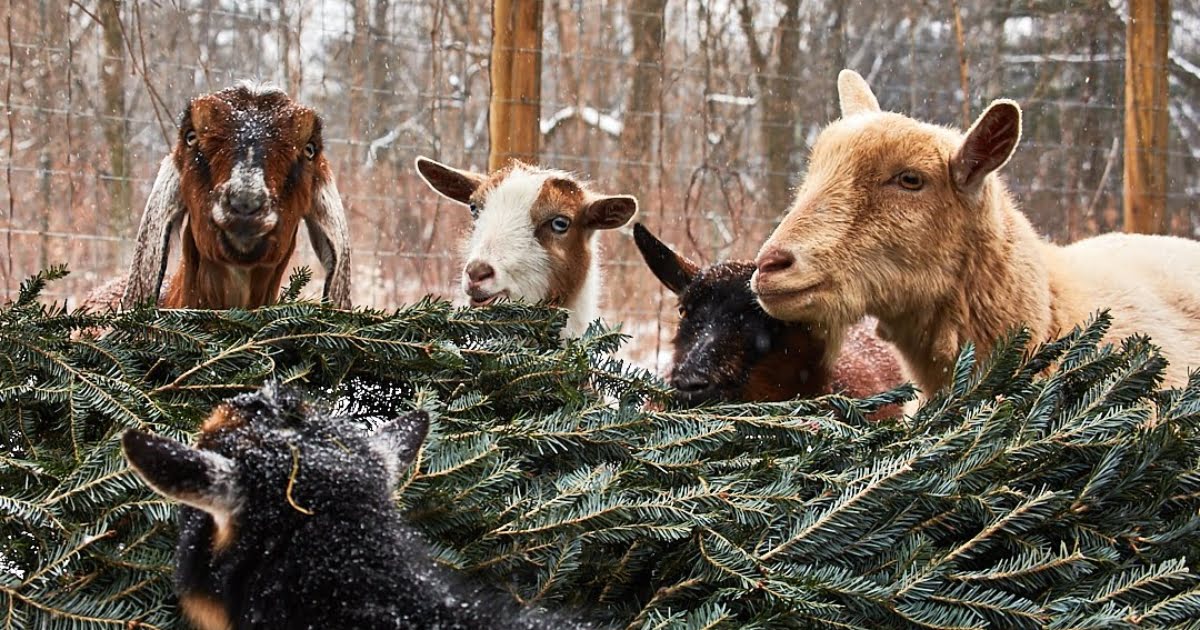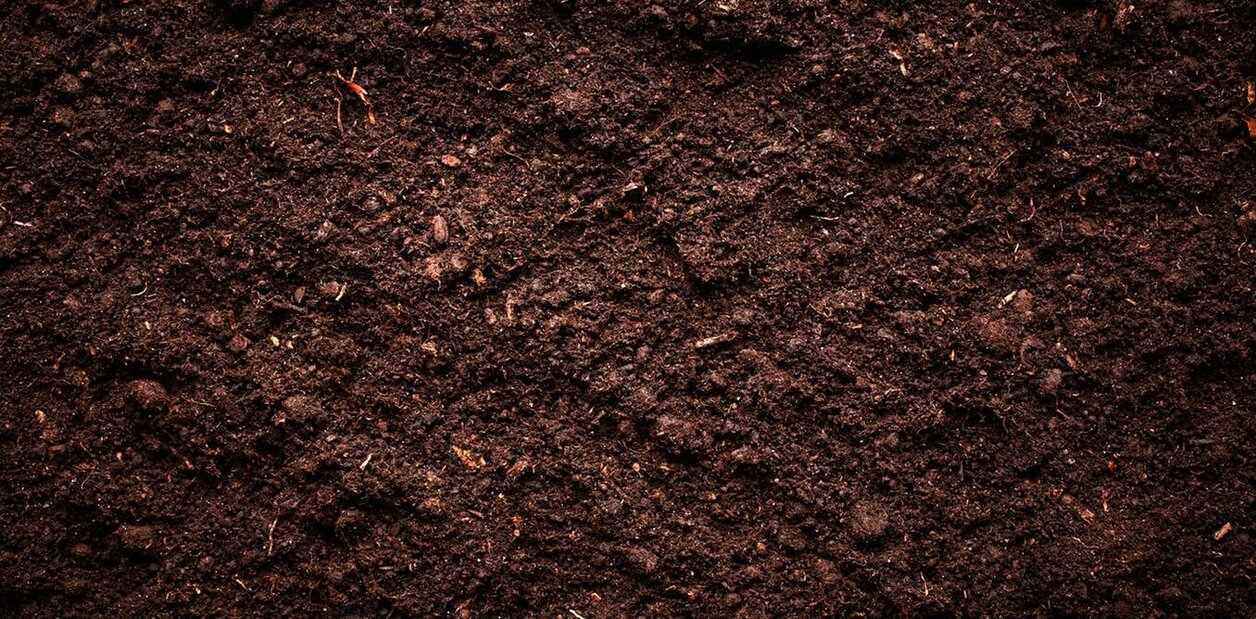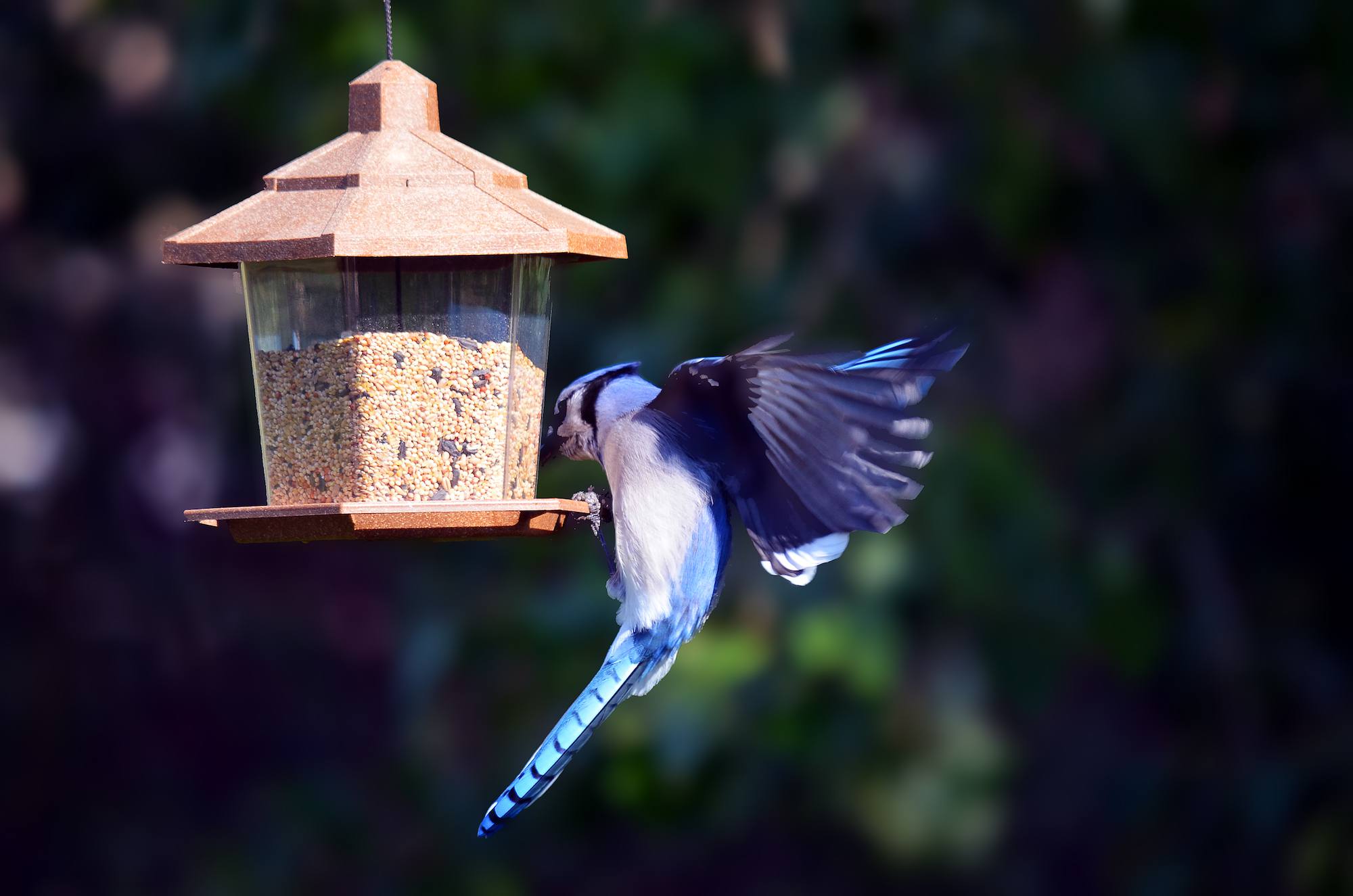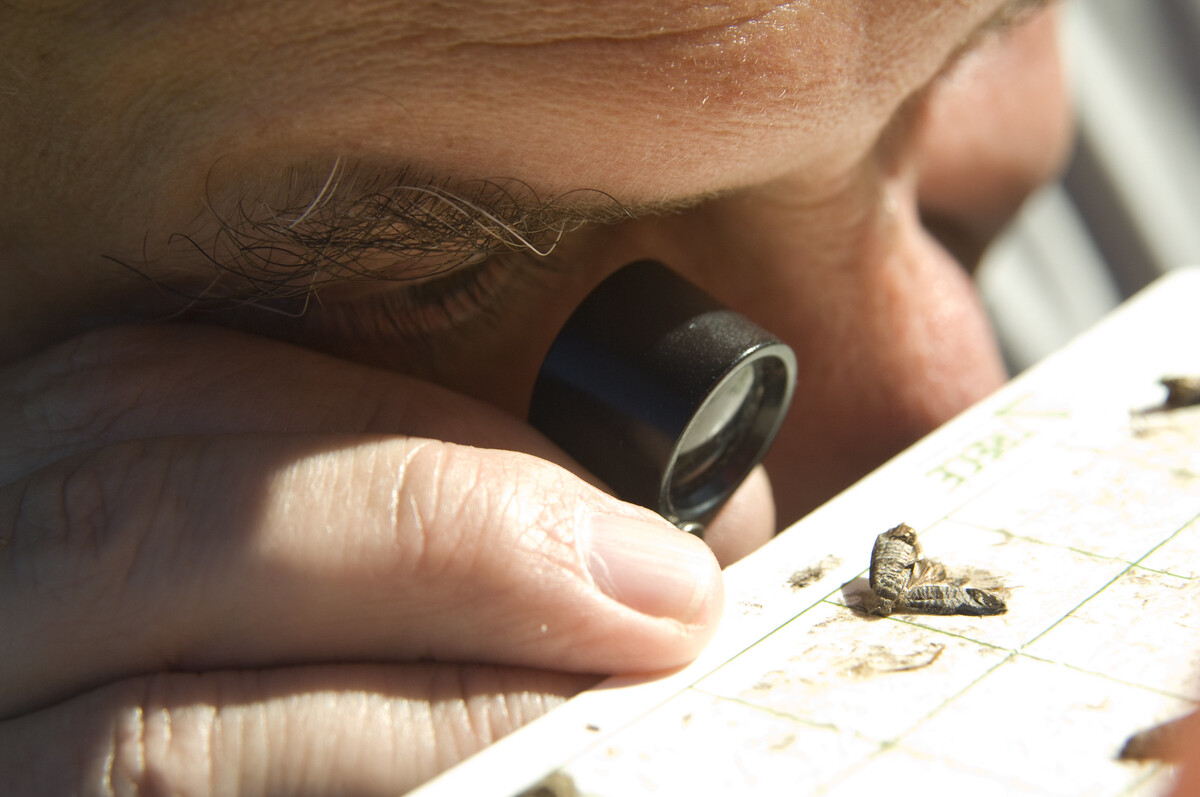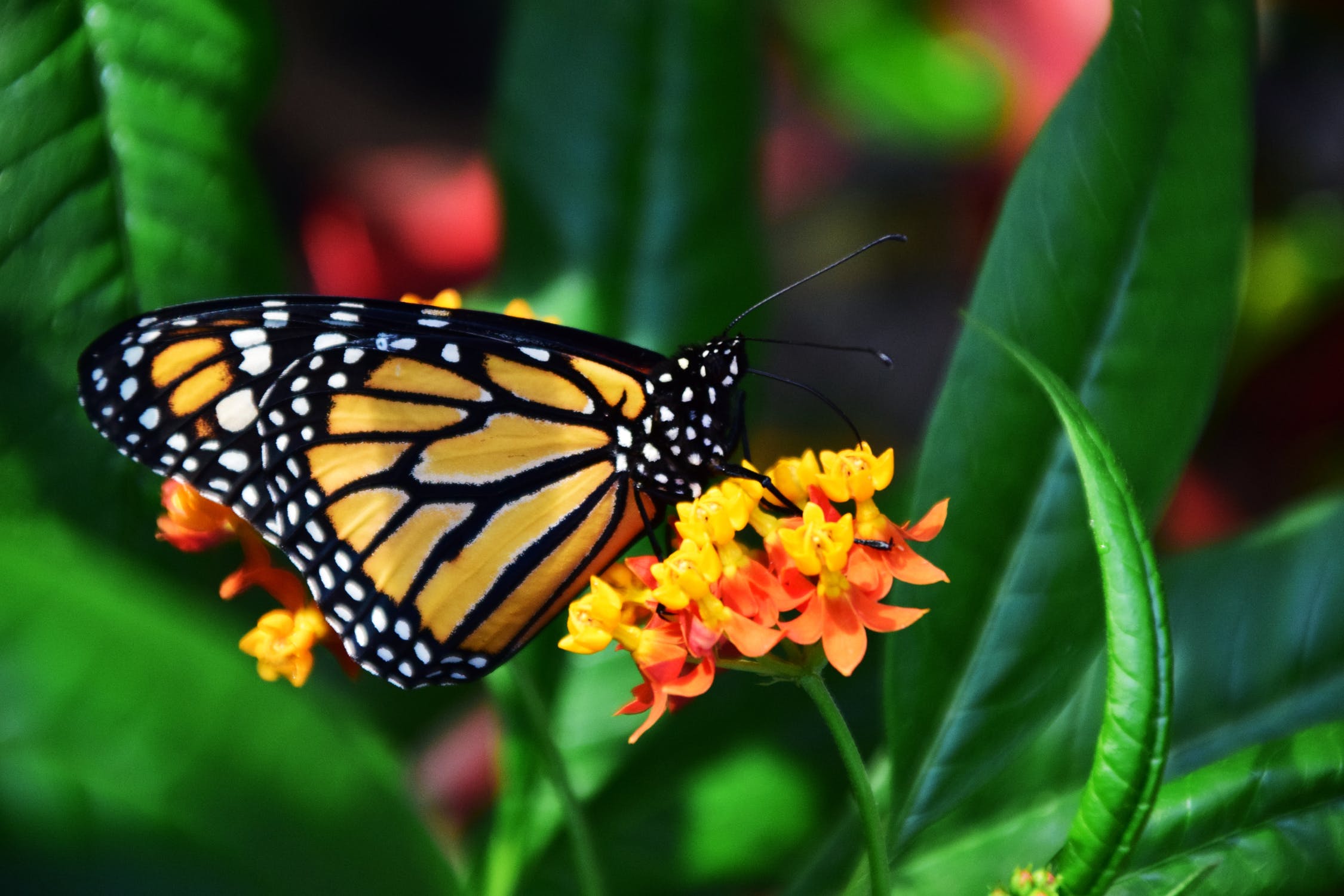Home>Gardening News and Trends>Latest News>Which Animals Eat Insects


Latest News
Which Animals Eat Insects
Modified: January 22, 2024
Discover the latest news on which animals eat insects and the fascinating world of insectivores in our comprehensive guide. Explore their unique adaptations and feeding habits.
(Many of the links in this article redirect to a specific reviewed product. Your purchase of these products through affiliate links helps to generate commission for Chicagolandgardening.com, at no extra cost. Learn more)
Table of Contents
Introduction
Insects are a vital part of our ecosystem, playing various roles such as pollinators, decomposers, and even as a food source for other animals. Many animals have evolved to include insects as a significant part of their diet, reaping numerous benefits from this dietary choice. From mammals and birds to reptiles and amphibians, a wide range of creatures have developed specialized adaptations to consume insects efficiently.
The consumption of insects provides several advantages for these animals. Firstly, insects are rich in essential nutrients, including proteins, vitamins, and minerals, making them a highly nutritious food source. Additionally, insects are generally abundant and readily available in different habitats, ensuring a consistent and accessible food supply. Moreover, insects reproduce quickly, allowing predator populations to sustain their dietary needs.
In this article, we will explore the fascinating world of animal insect-eaters. We will discover the diverse range of animals that have incorporated insects into their diet and understand the unique adaptations they possess for successful insect capture and consumption. From mammals such as bats and anteaters to birds like swallows and hoopoes, we will delve into the intriguing strategies employed by these creatures to hunt and devour their tiny prey. We will also explore how reptiles and amphibians, including lizards, frogs, and toads, have embraced insects as a significant component of their diet. Lastly, we will learn about fish species that have developed a taste for insects, as well as insects themselves that consume their fellow arthropods.
By uncovering the various animals that eat insects, we gain a greater appreciation for the complex, interconnected web of life in which insects play a vital role. Let us now embark on this exciting journey and dive into the amazing world of insect consumption in the animal kingdom.
Benefits of Insect Consumption for Animals
Insects offer numerous benefits to animals that incorporate them into their diet. Let’s explore some of the advantages of insect consumption.
- High Nutritional Value: Insects are rich in protein, essential amino acids, and fats, making them a highly nutritious food source for animals. They provide a concentrated source of energy and help to meet the dietary requirements of insect-eating species.
- Abundance and Availability: Insects are incredibly abundant and can be found in various habitats worldwide. This abundance ensures a consistent and accessible food source for animals, especially during periods when other food options may be scarce.
- Rapid Reproduction: Insects have high reproductive rates, allowing their populations to quickly replenish. This rapid reproduction ensures a continuous supply of food for insect-eating animals, even in environments where other prey species may struggle to sustain their populations.
- Disease Prevention: Some insects are carriers of harmful diseases. By consuming these disease-carrying insects, some animal species serve as a natural control mechanism, helping to reduce the prevalence of these diseases in their ecosystems.
- Feeding Efficiency: Insects are small and often abundant, making them easy targets for hunting. Many insect-eating animals have evolved specialized adaptations, such as sharp beaks or long tongues, to efficiently capture and consume insects, enhancing their feeding efficiency.
- Dietary Diversity: Incorporating insects into their diet allows animals to diversify their food sources. This dietary diversity can be crucial for animals, especially during times when their primary food sources may be limited or unavailable.
Overall, the consumption of insects provides a range of benefits for animals, from their nutritional value to their abundance and availability as a food source. By including insects in their diet, animal species can thrive by ensuring their dietary needs are met, even in challenging environments.
Mammals that Eat Insects
While most mammals are known for their preference for plant-based diets or hunting larger prey, there are several species that have adapted to include insects as a significant part of their diet. These insect-eating mammals, also known as insectivores, possess unique physical and behavioral characteristics that enable them to capture and consume their tiny prey.
One well-known insectivorous mammal is the bat. Bats are highly diverse in their feeding habits and can consume a variety of insects, including mosquitoes, moths, and beetles. With their impressive echolocation abilities, bats can detect and catch insects mid-flight, making them skilled aerial hunters. Some species, like the Mexican free-tailed bat, even form large colonies to take advantage of the abundant insect populations in specific habitats.
Another mammal that has embraced an insect-based diet is the anteater. These fascinating creatures have long snouts and sticky tongues specially adapted for capturing insects. Anteaters primarily feed on ants and termites, using their strong claws to tear open insect nests and their long tongues to lap up the insects inside. The giant anteater, in particular, can consume thousands of insects in a single day to meet its dietary needs.
Certain primates, such as tamarins and marmosets, also include insects in their diet. These small, agile monkeys have sharp teeth and claws, enabling them to catch and consume a variety of insects like grasshoppers, spiders, and ants. Insects provide a valuable source of protein for these primates, supplementing their predominantly plant-based diet.
It is not only terrestrial mammals that rely on insects as a food source. Some aquatic mammals, such as otters, also incorporate insects into their diet. River otters, for example, consume aquatic insects like dragonfly larvae and water beetles. These semi-aquatic mammals use their dexterous paws and sharp teeth to catch and consume their prey, often displaying impressive hunting techniques.
Insect consumption is a versatile dietary strategy among mammals, allowing them to adapt to different environments and exploit available food sources. By including insects in their diet, these insectivorous mammals have found a niche that provides a reliable and abundant source of nutrition in their respective habitats.
Birds that Eat Insects
Birds are a diverse group of animals known for their wide array of feeding habits. While many birds primarily consume seeds, fruits, or small prey, there are numerous species that have evolved to feed exclusively or predominantly on insects. These insect-eating birds, also known as insectivorous birds, possess specialized beaks, claws, and hunting techniques that allow them to effectively capture and consume their tiny prey.
One group of birds well-known for their insectivorous diet is the swallows. Swallows are highly agile and skilled flyers, allowing them to catch insects on the wing with remarkable precision. Their long, pointed wings enable swift and maneuverable aerial acrobatics as they swoop and dive to catch flying insects such as flies, bees, and mosquitoes. Swallows play an important role in controlling insect populations and are often a welcome sight during the warmer months when insects are more abundant.
The hoopoe is another bird species that relies heavily on insects for sustenance. With its distinctive crest and long, slender beak, the hoopoe is uniquely adapted for probing the ground in search of insects, larvae, and other small invertebrates. It uses its sturdy bill and flexible neck to extract insects from the soil or bark, making it a master of extracting tasty morsels hidden within crevices.
Woodpeckers, although primarily known for their feeding habits involving tree sap and insects living beneath the bark, also incorporate insects into their diet. These birds have strong, chisel-like beaks that enable them to peck into wood, revealing insect larvae, ants, beetles, and other insects for consumption. In addition to their ability to capture insects on tree trunks, woodpeckers also have a specialized feeding technique called “anting,” in which they rub ants or other insects onto their feathers. This behavior is believed to help control parasites and protect the woodpeckers’ plumage.
Phalaropes are a unique group of wading birds that have a distinctive feeding behavior when it comes to insects. These birds swim in circles, creating whirlpools that stir up insects and other aquatic invertebrates to the water’s surface. They then use their needle-like beaks to pick off the exposed prey. By adopting this feeding strategy, phalaropes are able to take advantage of the abundance of insects present in wetlands and other water bodies.
Insectivorous birds demonstrate remarkable adaptations and diverse foraging techniques that allow them to effectively exploit insect resources. By consuming insects, these avian species contribute to ecological balance by helping to control insect populations and participating in nutrient cycling processes.
Reptiles that Eat Insects
When we think of reptiles, we often imagine them devouring larger prey like rodents or other reptiles. However, there are several reptile species that rely on insects as a significant part of their diet. These insect-eating reptiles have unique adaptations that allow them to capture and consume their small and elusive prey.
One notable reptile that consumes insects is the chameleon. Chameleons have a remarkable ability to change their skin color and blend into their surroundings, making them stealthy hunters. They use their long, sticky tongues to capture insects such as crickets, grasshoppers, and flies. Chameleons can extend their tongues at incredible speeds, enabling them to snatch prey from a distance with pin-point accuracy.
Some lizards are also known to have an insect-based diet. An example is the green anole, a small lizard found in the southeastern United States. These lizards primarily prey on insects like ants, beetles, and grasshoppers. With their excellent climbing abilities and quick reflexes, green anoles are able to capture their insect prey as they scuttle through trees and shrubs.
Geckos, with their unique adhesive pads on their toes, are another group of reptiles that consume insects. These pads allow geckos to effortlessly climb vertical surfaces and even walk on ceilings. Geckos primarily feed on insects such as crickets, cockroaches, and moths. Their keen senses and excellent night vision make them efficient nocturnal hunters.
The insectivorous diet is not limited to lizards and chameleons. Some turtles and tortoises also incorporate insects into their diet. For example, the box turtle, a common land-dwelling turtle, is known to opportunistically feed on insects when they are available. They use their powerful jaws to capture and consume beetles, ants, and other small invertebrates.
Insect consumption among reptiles is an essential dietary strategy, allowing them to glean vital nutrients from these small creatures. Through their insect-based diet, these reptiles play a role in maintaining insect populations and contribute to the balance of ecosystems they inhabit.
Amphibians that Eat Insects
Amphibians, with their semi-aquatic lifestyles, are well-known for their diverse diets. While many amphibians consume a combination of plants and small invertebrates, there are numerous species that heavily rely on insects as a primary food source. These insect-eating amphibians possess specialized adaptations that allow them to capture and consume their small, wriggling prey.
One group of amphibians that prominently feed on insects is frogs and toads. With their long, sticky tongues and impressive jumping abilities, frogs and toads are skilled insect hunters. They lie in wait for unsuspecting insects to come within reach before swiftly extending their tongues to snatch them up. Frogs and toads consume a variety of insects, including flies, beetles, mosquitoes, and grasshoppers. Some species, like the poison dart frogs, have brightly colored skin as a warning signal to predators, showcasing their toxic nature. These fascinating amphibians obtain toxic compounds from consuming a specific diet of ants, beetles, and other invertebrates.
Salamanders, another group of amphibians, also incorporate insects into their diet. Salamanders have elongated bodies, strong limbs, and smooth, moist skin, allowing them to be efficient predators both on land and in water. They consume various insects, including spiders, beetles, and earthworms. Salamanders use their projectile tongues to snatch up prey, and some species have specialized teeth structures to secure and consume larger insects.
Amphibians, being ectothermic creatures, rely on external sources of heat to regulate their body temperature. This dependence on environmental temperature often makes them more active during warmer months when insect populations are abundant. Their insectivorous feeding habits during these periods play a crucial role in controlling insect populations and maintaining ecological balance in their habitats.
Insect consumption is not solely limited to adult amphibians. The larvae of many amphibians, such as tadpoles and newts, also exhibit a diet primarily consisting of insects and other small invertebrates. This dietary preference is essential for their growth and development before they undergo metamorphosis into mature adults.
Insect consumption plays a vital role in the ecological dynamics of amphibian populations. By consuming insects, amphibians help to regulate and control the abundance of these small invertebrates, thereby influencing the overall balance of their ecosystems. Additionally, the varied feeding strategies and adaptations seen in insect-eating amphibians make them a fascinating group of creatures to study and appreciate.
Fish that Eat Insects
When we think of fish, we often imagine them feasting on smaller fish or aquatic organisms. However, numerous fish species have evolved to include insects as a significant part of their diet. These insectivorous fish possess unique adaptations that allow them to capture and consume insects, both on the water’s surface and beneath the water.
One group of fish known for their affinity for insects is the surface-feeding fish, such as the topminnows and certain species of gouramis. These fish have upturned mouths that allow them to skim insects off the water’s surface. They can delicately slurp up insects like mosquitoes, flies, and even smaller aquatic insects. In addition to insects, surface-feeding fish also consume floating plants, algae, and other small organisms present on the water’s surface.
Another group of fish that consume insects are the minnows and cyprinids. These fish have specialized teeth and jaws that enable them to pick insects off vegetation or capture them in the water. They commonly feed on small insects, larvae, and invertebrates found near the water’s edge or within aquatic vegetation. Some species, like the mosquito fish, have even been introduced to control mosquito populations by feeding on their larvae.
Certain species of trout and salmon are also known to feed on insects during their freshwater stages. They can be highly selective in their prey choices, targeting specific insects like mayflies, caddisflies, and stoneflies. These fish have keen eyesight and exhibit feeding behavior known as “rising” where they come to the water’s surface to sip up insects floating on the surface or emerging from the water.
Insectivorous fish can be found in both freshwater and marine environments. In mangrove ecosystems, for instance, archerfish have adapted to shoot water jets at insects perched on tree branches above the water, knocking the insects into the water where they can then be consumed. Some bottom-dwelling fish species, like loaches, also consume insects and larvae found on or beneath the substrate.
Insect consumption provides fish with a rich source of protein and nutrients. It allows them to exploit diverse food sources in their environment and adapt to varying conditions. By incorporating insects into their diet, these fish contribute to the regulation of insect populations and the overall balance of their aquatic ecosystems.
Insects that Eat Insects
In the intricate world of insects, it should come as no surprise that some species have evolved to consume their own kind. In fact, insectivory is a common dietary strategy employed by many insect species. These insect-eating insects play crucial roles in controlling populations and maintaining ecosystem balance.
One group of insects known for their insectivorous habits is the mantises. Praying mantises are well-known predators that feed on a wide range of insects, including flies, moths, beetles, and even other mantises. With their strong forelegs and sharp mandibles, mantises are masters of camouflage and ambush, patiently awaiting unsuspecting prey before striking with lightning speed.
Assassin bugs, also known as ambush bugs, are another group of insect predators. They possess long, piercing mouthparts called proboscises that they use to inject enzymes into their prey, paralyzing and liquefying them from the inside. Assassin bugs primarily target and consume other insects, particularly small bugs and aphids.
Ladybugs, despite their endearing appearance, are formidable hunters of insects as well. Ladybug larvae and adults feed on aphids, mites, and small insects. These voracious predators are beneficial to gardens and crops, as they act as natural pest control agents by keeping populations of destructive insects in check.
Spiders, although not technically insects, are notable for their insectivorous behavior. They use their silk-spinning abilities to create intricate webs, trapping unsuspecting insects that become entangled. Spiders then inject venom into their prey, immobilizing them before feeding on their liquefied internal contents. Spider species like the orb-weaver spiders and jumping spiders are particularly adept at capturing and consuming insects.
Dragonflies and damselflies are known for their skillful aerial acrobatics as they hunt down their prey. These insects have large compound eyes, allowing them to detect and track flying insects with remarkable accuracy. Dragonfly larvae, also known as nymphs, are aquatic and feed on a variety of small aquatic insects and invertebrates.
Insectivorous insects play vital roles in maintaining ecological balance by controlling populations of other insects. By feeding on other insects, they help regulate population sizes and prevent outbreaks of pest species. This complex web of predator-prey interactions ensures the stability and health of ecosystems.
Conclusion
The captivating world of insect consumption in the animal kingdom highlights the intricate and interconnected relationships between species. From mammals and birds to reptiles, amphibians, fish, and even insects themselves, various creatures have evolved to incorporate insects as a vital part of their diet. This dietary choice offers numerous benefits, including high nutritional value, abundance, rapid reproduction, disease prevention, feeding efficiency, and dietary diversity.
Mammals such as bats, anteaters, and certain primates have developed specialized adaptations to capture and consume insects. Birds like swallows, hoopoes, and woodpeckers utilize their beaks and hunting techniques to feed on insects, contributing to the control of insect populations. Reptiles such as chameleons, lizards, and turtles showcase their unique adaptations to catch and consume insects in their respective habitats. Amphibians like frogs, toads, and salamanders demonstrate their ability to capture and consume insects both on land and in water.
Even fish species, both in freshwater and marine environments, have adapted to include insects as a significant part of their diet. Insects provide a rich source of protein and nutrients for these aquatic creatures, contributing to their overall health and survival. Additionally, there are insects themselves that have embraced a predatory lifestyle, consuming other insects as their primary food source.
Through their insectivorous habits, these animals and insects play crucial roles in maintaining ecological balance. By controlling populations of insects, they help prevent outbreaks of pests and contribute to the stability and health of their respective ecosystems. The diverse range of adaptations and feeding strategies employed by these insect-eaters adds to the wonder and complexity of the natural world.
In conclusion, the inclusion of insects in the diets of various animal species demonstrates the versatility and adaptability of these creatures in exploiting available food sources. It showcases the intricate web of predator-prey relationships and the vital role that insects play in sustaining life on our planet. Studying and appreciating the diverse array of insectivorous animals allows us to gain a deeper understanding of the interconnectedness and balance of nature.
